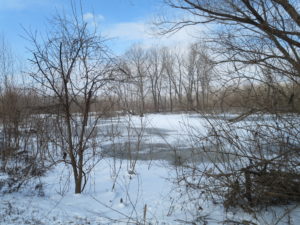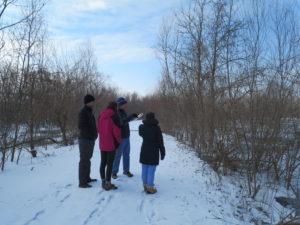6/6/17 UPDATE: On Friday, December 23, we received notice that the City of Chesterfield applied to overdevelop even more of the floodplain they should have never paved in the first place. The timeline for comments was excessively short given the holiday. On June 6, 2017, the St. Louis Post-Dispatch reported that the City of Chesterfield voided a contract to build a 74-acre development of indoor sports domes among other structures. If approved, the project would have included basketball and volleyball courts, indoor softball, and little league fields as well as substantial office space, large education center, and hotel. While the news article focuses on the proposed project’s economic downfalls and political complications concerning the land ownership, developing a massive impervious project in the floodplain would have been an environmentally-disastrous endeavor. MCE is pleased with the City’s decision to halt the foolish sports complex project. However, the City remains woefully out of compliance with its mitigation requirements (see blog below) for prior wetland destruction. Previous taxpayer-funded development filled 80-85 acres of wetlands in the Missouri River floodplain on land that will certainly flood again and will again, require public resources to alleviate those flood damages.
Read the public notice here: pn-permit-reauthorization-p-2032-cmbnd
You can help the fight for floodplains and public health by making a year-end contribution here.
by Alicia Claire Lloyd
2/2/2016
Spurred by tax incentives, Chesterfield, one of St. Louis’ westernmost suburbs, has grown to be a retail mega development. With Chesterfield Commons, a massive, 1.2 million square foot mega retail complex over a mile long – the longest strip mall in the country, on the south side of Interstate 64 and an outdoor outlet mall on the north side, retail establishments have pushed the bounds and developed floodplain land cover right up to the Missouri River.
What was that floodplain land before it was a retail paradise? A substantial amount of the floodplain contained wetlands that had to be filled in with sediment and paved over before development. Wetlands hold flood waters during extreme events such as the flood of 1993.

In 1993, the Chesterfield Valley was completely inundated as the Missouri River topped the 100 year levee designed to hold the river in its banks. Subsidized by tax dollars, 160 of the 240 businesses located in the valley returned. Despite the property and sales tax benefits the city touts, many experts and scientists note the irresponsibility and environmental detriments of massive floodplain development (http://www.economist.com/news/united-states/21685491-measures-make-life-near-missouri-flood-plain-safer-have-done-opposite-disaster).
The Clean Water Act (CWA) requires developers to obtain a 404 permit (404 is the provision number in the CWA) in order to discharge “fill material” into streams and wetlands such as those in the Missouri River floodplain. 404 permits require a “no net loss” of the environmental benefits of wetlands and streams by requiring the permittee to “mitigate” or make up for the wetlands or stream habitat they destroy by development activities. In an unusual move, instead of individual developer permittees, the City of Chesterfield assumed responsibility for the combined 404 mitigation projects of most of the new construction and the roads and drainage system that facilitated it.
The mitigation sites
The Chesterfield Valley development involved the destruction of approximately 80-85 acres of wetlands behind the reconstructed 500 year levee to hold the Missouri River during flood events in hopes of protecting the commercial investments. The Army Corps of Engineers required over 130 acres of mitigation to offset the environmental impacts of the wetland destruction and environmental disturbance of the huge new levee. The initial mitigation projects included two sites outside the 500 year levee. Unfortunately, soil conditions on the sites hindered the success of the wetland projects on the mitigation sites and the City has given up on the projects and applied to try again at a third site.

On a cold, Friday, January 22nd, MCE Clean Water Policy Coordinator, Alicia Lloyd, joined a team of Washington University Interdisciplinary Environmental Clinic student interns and their supervisor, Clinic Scientist, Ken Miller, on a site visit to evaluate the underperformance of the two mitigation sites and to get a sense of their geographic vicinity to the levee and river.


We continue to watchdog 404 permitted mitigation projects to advocate for real and verifiable wetland and stream restoration projects to offset the detrimental environmental impacts of commercial, industrial, and other development in Missouri. Stay tuned for more updates about our work on 404 permitting and other exciting water work!
